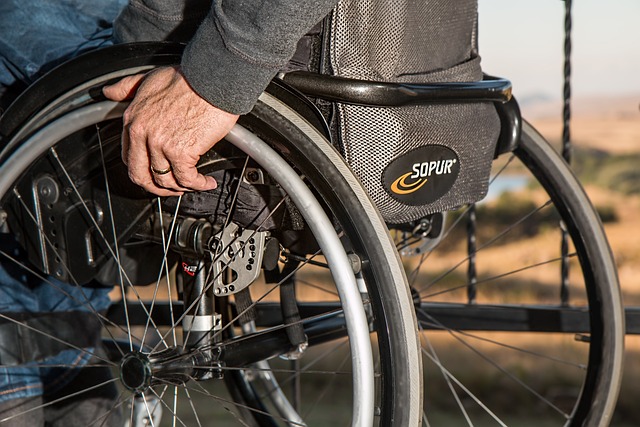A Practical Guide to Customizable Modular Homes for Senior Living
Modular homes designed for seniors are gaining attention as a practical option for those seeking comfort, accessibility, and efficient living. This guide explores how these modern, prefabricated homes can be customized with one to four rooms, offering thoughtful features like wider entrances, energy-efficient layouts, and smart enhancements—ideal for creating a safe, adaptable space that fits a range of lifestyles and preferences.

What are modular homes for seniors?
Modular homes for seniors are prefabricated housing units specifically designed to meet the unique needs of older adults. These homes are constructed in sections or modules in a factory setting, then transported to the final location for assembly. This method allows for greater quality control, faster construction times, and often lower costs compared to traditional on-site building methods. Modular homes for seniors incorporate features that promote accessibility, safety, and comfort, making them an attractive option for those looking to age in place or downsize to a more manageable living space.
How do prefab homes for older adults differ from traditional homes?
Prefab homes for older adults differ from traditional homes in several key aspects. Firstly, they are built with accessibility in mind, often featuring wider doorways, zero-step entries, and single-floor layouts to accommodate mobility aids. Secondly, these homes typically incorporate safety features such as grab bars, non-slip flooring, and improved lighting to reduce the risk of falls. Additionally, prefab homes for seniors often prioritize energy efficiency and low maintenance, with durable materials and smart home technologies that can help reduce utility costs and ease the burden of home upkeep.
What customizable features are available in modular homes for seniors?
Modular homes for seniors offer a wide range of customizable features to suit individual needs and preferences. Some common options include:
-
Adjustable countertop heights in kitchens and bathrooms
-
Walk-in showers with built-in seating and handheld showerheads
-
Smart home systems for climate control, lighting, and security
-
Open floor plans to enhance mobility and social interaction
-
Built-in medical alert systems
-
Customizable storage solutions to maximize space efficiency
-
Covered entryways and porches for outdoor enjoyment
-
Lever-style door handles and faucets for easier use
These features can be tailored to the specific needs of the homeowner, ensuring a comfortable and functional living space that can adapt as needs change over time.
How do energy-efficient homes for the elderly benefit seniors?
Energy-efficient homes offer numerous benefits for elderly residents, contributing to both comfort and financial savings. These homes typically feature improved insulation, energy-efficient windows, and high-efficiency HVAC systems, which help maintain a consistent indoor temperature year-round. This is particularly important for seniors who may be more sensitive to temperature fluctuations. Additionally, energy-efficient appliances and lighting reduce electricity consumption, leading to lower utility bills—a significant advantage for those on fixed incomes.
What are the cost considerations for modular homes for seniors?
When considering a modular home for senior living, it’s important to understand the associated costs. While prices can vary widely depending on location, size, and customization options, modular homes generally offer cost savings compared to traditional construction methods. Factors that influence the overall cost include:
-
Base model price
-
Customization and accessibility features
-
Land purchase and site preparation
-
Transportation and assembly costs
-
Utility connections and permits
It’s worth noting that while the initial investment may seem substantial, the long-term savings in energy costs and potential healthcare expenses (due to improved safety features) can offset the upfront costs over time.
How do I choose the right modular home provider for senior living?
Selecting the right modular home provider is crucial for ensuring a successful and satisfying living experience. When evaluating providers, consider the following factors:
-
Experience in senior-specific home design
-
Range of customization options
-
Quality of materials and construction
-
Energy efficiency ratings
-
Warranty and after-sale support
-
Customer reviews and testimonials
To help you get started, here’s a comparison of some well-known modular home providers that offer senior-friendly options:
| Provider Name | Senior-Specific Features | Energy Efficiency Rating | Customization Level |
|---|---|---|---|
| Clayton Homes | Wide doorways, single-level floor plans | Energy Star certified | High |
| Champion Homes | ADA-compliant designs available | Energy Star certified | Medium |
| Deer Valley Homebuilders | Senior-friendly floor plans | Energy-efficient construction | Medium-High |
| Palm Harbor Homes | Aging-in-place designs | Energy Star certified | High |
Prices, rates, or cost estimates mentioned in this article are based on the latest available information but may change over time. Independent research is advised before making financial decisions.
In conclusion, customizable modular homes offer a practical and attractive housing solution for seniors looking to maintain independence and comfort in their golden years. With a wide range of features designed to enhance accessibility, safety, and energy efficiency, these homes can be tailored to meet the unique needs of older adults. By carefully considering the available options and choosing a reputable provider, seniors can create a living space that supports their lifestyle and promotes well-being for years to come.




